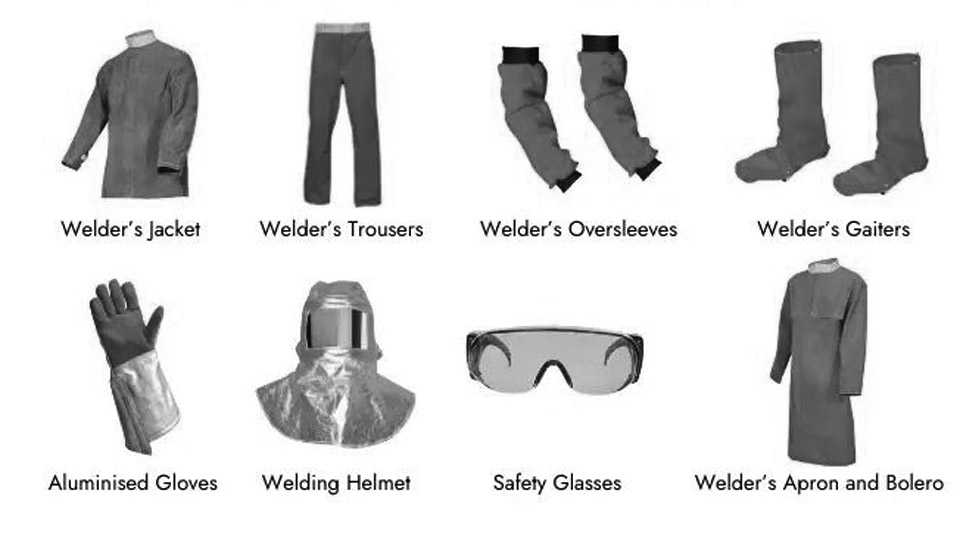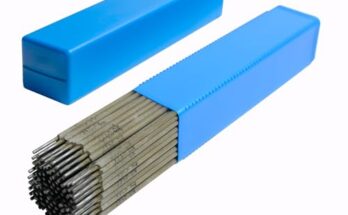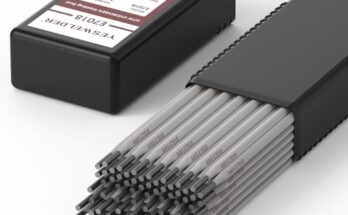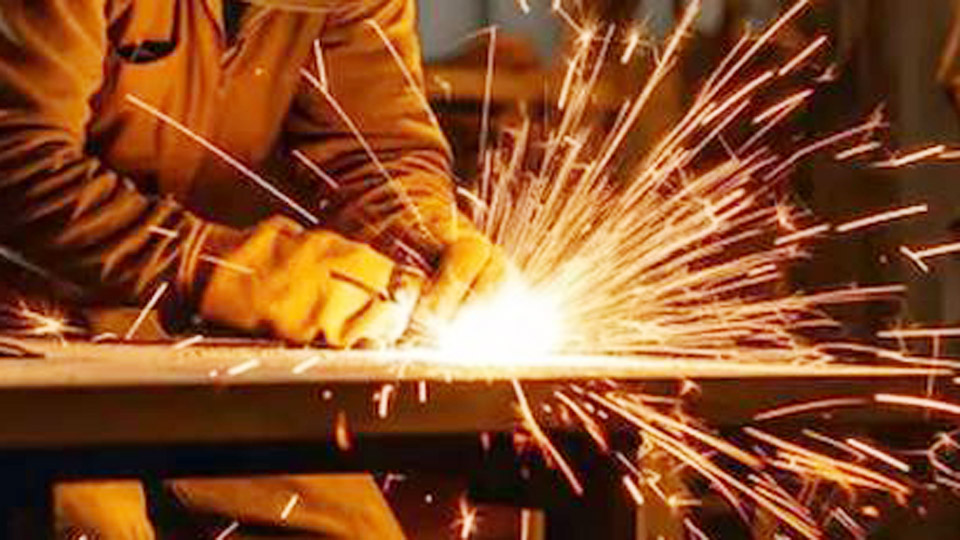When someone asks me about arc welding, the first thing I talk about isn’t the machine or the metal—it’s safety. I’ve been around arc welding for years, and one thing I’ve learned is this: safety isn’t optional. It’s the foundation of good welding practice.
Welding is powerful. It involves intense heat, blinding light, flying sparks, and toxic fumes. But with the right safety gear, you can protect yourself from all of it.
If you’re new to arc welding or just looking to improve your setup, I’m here to guide you through the essential safety equipment you’ll need.

Image by oteplace
This isn’t just a checklist—it’s knowledge I’ve gained from experience. I want you to be safe, confident, and ready every time you pick up that electrode holder. Let’s talk about the safety equipment that every arc welder should have and why each one matters.
Welding Helmet with Auto-Darkening Feature
Your eyes are your most valuable tools, and arc welding exposes them to extreme danger. The arc produces ultraviolet (UV) and infrared (IR) radiation that can damage your vision permanently if you’re not protected.
I never weld without my auto-darkening helmet. Unlike the old-school fixed shade helmets, these adjust instantly when the arc strikes. You don’t need to nod your head to drop it or fumble with settings. It just works.
Auto-darkening helmets usually allow you to set the shade range (often from 9 to 13) depending on how bright your arc is. That flexibility makes a big difference, especially if you switch between light and heavy welding.
Key Features to Look For:
- Adjustable shade levels
- Quick response time (less than 1/25,000 of a second is ideal)
- Comfortable fit and lightweight shell
- Large viewing area for better visibility
- Solar-powered or battery backup
Welding Gloves (Heat-Resistant and Flame-Retardant)
Your hands are closest to the action. You’re holding the electrode, guiding the puddle, adjusting clamps—it’s non-stop work. And let me tell you, arc welding puts out some serious heat and spatter.
That’s why a proper pair of welding gloves is essential. I use heavy-duty leather gloves with extra insulation. They’re thick, but still flexible enough to handle tools.
Don’t settle for anything less than welding-grade gloves. Garden gloves or work gloves won’t cut it. You need gloves that resist heat, flames, and abrasion.
My Recommendation:
- Go for split cowhide or elk skin
- Choose gloves with a long cuff to protect your wrists and forearms
- Make sure they fit snugly without restricting movement
- Get gloves that are specifically rated for arc welding
Flame-Resistant Welding Jacket or Apron
Your upper body takes the next most direct hit from sparks and heat. Regular clothing—especially synthetics—can catch fire or melt to your skin.
That’s why I wear a welding jacket every time I’m at the table. Flame-resistant cotton or leather jackets provide a solid barrier. If I’m doing quick tack welds, I’ll throw on a leather welding apron instead.
It’s not just about burns. A proper jacket keeps your skin safe from UV rays that cause something called “welder’s flash” or “arc burn.” I’ve felt it before—it’s like a nasty sunburn that creeps up on you hours later. It’s not fun.
Jacket Features to Look For:
- Flame-resistant material (FR cotton, treated denim, or leather)
- Lightweight and breathable if you’re welding in warm environments
- Covered snaps or Velcro (metal buttons can conduct heat)
- Extended collar for neck protection
Welding Boots with Steel Toe and Metatarsal Guards
When I weld, I’m often standing on metal or concrete. I’ve had hot slag fall on my boots, and trust me—you don’t want to be wearing sneakers when that happens.
Welding boots aren’t just about comfort—they protect your toes from falling metal and your feet from burns. Steel toes are a must, and metatarsal guards add another layer over your upper foot.
The soles should be slip-resistant and heat-resistant too, especially if you’re walking over hot scraps or working outdoors.
What I Look For in Welding Boots:
- Leather construction
- Slip-resistant soles (oil and chemical resistant)
- Heat-resistant rubber soles
- Internal or external metatarsal guards
- ASTM or ANSI safety ratings
Welding Respirators or Fume Extractors
One of the things people often overlook is air quality. Arc welding produces fumes, and depending on what you’re welding, those fumes can be toxic. Especially if you’re working indoors or using coated metals.
I always use a welding respirator if I’m working in a confined space. For open-air or shop welding, I have a fume extractor nearby. It pulls the bad stuff away from my face.
You don’t want to breathe in metal vapors or ozone. It might not hit you today, but over time, it can seriously affect your lungs.
Best Respirator Features:
- Designed for welding (check the NIOSH rating)
- Low profile to fit under your helmet
- Replaceable filters or cartridges
- Good airflow and comfortable fit
Safety Glasses (Under the Helmet)
Even with a helmet, I always wear safety glasses. Why? Because the helmet doesn’t protect from dust, flying metal, or grinding sparks. Accidents happen fast, and your helmet may be up when they do.
Welding-rated safety glasses come with side shields and UV protection. I never weld without them—even if I’m just tacking something small.
Ideal Glasses Should:
- Be ANSI Z87.1 compliant
- Have wrap-around side protection
- Be scratch-resistant and anti-fog
- Offer shade 3 or 5 for cutting or grinding
Hearing Protection (Earplugs or Earmuffs)
Welding isn’t always quiet. Grinding, chipping, hammering, and sometimes even the arc itself can be loud enough to cause hearing damage.
I use foam earplugs under my helmet when things get loud. If I’m cutting or grinding, I’ll switch to earmuffs for better protection.
And here’s a tip—some sparks can fly into your ears if you’re not covered. It’s rare, but it happens. So don’t overlook this part of your gear.
Choose Hearing Protection That:
- Has a high NRR rating (Noise Reduction Rating)
- Is comfortable under your helmet
- Doesn’t interfere with communication if you’re working with others
Fire-Resistant Pants or Welding Bib Overalls
Wearing jeans may seem fine for welding, but not all jeans are fire-safe. If they’re made with synthetic blends, they can melt.
I usually wear FR-rated pants or welding bib overalls. They’re tough, breathable, and protect everything from my waist down.
Leather chaps are another option if you’re doing heavy vertical welding or working with overhead joints.
Look For:
- 100% cotton with flame-resistant treatment
- No cuffs (they catch sparks)
- High waistband for belly protection
- Leather for extra coverage
Welding Blanket or Curtain
I keep a welding blanket close anytime I’m working on something that can’t handle heat or sparks. Whether it’s protecting a nearby machine or the floor, it gives peace of mind.
A welding curtain is great if you’re sharing a space with others. It shields bystanders from arc flash while still letting light through.
Both of these add a layer of professionalism to your workspace—and they prevent accidents.
First Aid Kit and Fire Extinguisher
Even with all the right gear, accidents can still happen. I keep a fully stocked first aid kit in my shop, plus a Class ABC fire extinguisher close by.
You hope you’ll never need them—but when you do, you’ll be glad they’re there. It’s just another layer of being prepared.
Safety Equipment Overview
Here’s a quick look at the core safety equipment for arc welding:
| Equipment | Purpose | Key Features |
|---|---|---|
| Welding Helmet | Protects eyes and face | Auto-darkening, shade control |
| Welding Gloves | Shields hands from heat | Leather, insulated, flame-resistant |
| Welding Jacket | Covers torso and arms | Flame-resistant, leather or FR cotton |
| Welding Boots | Protects feet and toes | Steel toe, metatarsal guard |
| Respirator | Filters toxic fumes | NIOSH-rated, low profile |
| Safety Glasses | Eye protection under helmet | UV shielded, ANSI Z87.1 |
| Hearing Protection | Protects ears from noise and sparks | High NRR, comfortable fit |
| Welding Pants | Shields legs | FR cotton or leather |
| Blanket/Curtain | Spark protection for surroundings | Heat-resistant, flame-retardant |
| First Aid Kit/Fire Extinguisher | Emergency safety | Accessible and updated |
Final Thoughts
Arc welding is a powerful skill, but it comes with serious risks. I’ve learned through experience that safety isn’t just about checking boxes—it’s about respecting the craft and protecting yourself and those around you.
The gear we talked about today isn’t just equipment—it’s peace of mind. It lets you focus on your work without fear. Whether you’re welding in your garage or out in the field, having the right protection changes everything.
So before you strike an arc, check your gear. Make sure you’re ready—not just to weld, but to do it safely.
Take your time, invest in quality equipment, and always keep safety first. That’s how we keep welding not just productive, but enjoyable for years to come.
Frequently Asked Questions
What is the most important safety equipment for arc welding?
The welding helmet is the most essential. It protects your eyes and face from intense light and UV radiation.
Can I weld in regular clothes?
No, you should always wear flame-resistant clothing. Regular clothes can catch fire or melt.
Do I need a respirator for arc welding?
Yes, especially in enclosed spaces or when working with coated metals. Welding fumes can be toxic.
Are safety glasses necessary if I wear a helmet?
Absolutely. Safety glasses protect you when the helmet is up and from flying particles.
What kind of boots are best for welding?
Leather boots with steel toes and metatarsal protection are best. They should also have heat-resistant soles.
How often should I replace my safety gear?
Inspect your gear regularly. Replace it if it’s worn, damaged, or no longer protective.
Is a fire extinguisher necessary for a welding setup?
Yes. Welding sparks can cause fires, so keeping an extinguisher nearby is smart and sometimes legally required.
Can I use welding gloves for other types of work?
Welding gloves are great for high-heat work but may be too bulky for precision tasks outside of welding.







